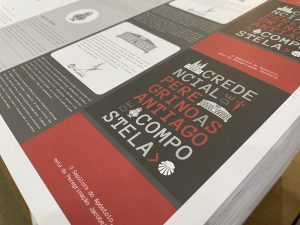The way we communicate as professionals says a lot about us—and about our company. Discover some essential secrets to writing good emails!
Emails are an important and indispensable communication tool between coworkers, clients, and suppliers.
It’s almost impossible to get through an entire day without using email—especially with the mobile revolution, which keeps us permanently connected or at least gives us the option to be.
Precisely because it has become so commonplace—because it’s quick and efficient, and because of the constant need to shorten communication (not to mention some gaps in education)—we often stop giving written messages the special and personalized attention they deserve. As a result, mistakes and miscommunications happen. And the worst part? We’re often not even aware of it.
Sometimes we come across emails that are poorly written, immature, offensive, unclear, or even irritating. In fact, a 2013 study by Sendmail, Inc. found that such emails lead to tension, confusion, and other negative outcomes for 64% of workers. Just imagine the impact on sales! Food for thought, right?
That’s why it’s so important not to underestimate the value of writing or replying to an email—it’s a reflection of your professionalism and plays a key role in shaping your company’s image.
With that in mind, let’s explore some key points you should never overlook when writing an email.
1. Use a professional email address.
If your email address is from your teenage years and looks something like sweet-tola20@exemplo.com, it’s time to create a new one.
Don’t worry about losing contact with people still using your old address—you can set up automatic forwarding to your new one.
Avoid using name abbreviations, exotic terms, references to football teams, or movie characters. Your email should project a professional image. Try something like firstname.lastname@example.cominstead of toninho@example.com —go for antonio.silva@example.com..
Also, if you’re not using a company email (which is recommended if you own a business), opt for a modern provider. For example, choose Gmail over something outdated like Telepac. Using an old domain might suggest stagnation or lack of innovation—definitely not the message you want to send.



2. Always fill in the subject line.
How often do we see emails with no subject? Too often. Even if you think the body of the message is what matters, or you’re trying to be quick, you should always fill in the subject line. Why?
Because if you don’t, it may come across as if your name alone should be enough to make your message seem important. This can come off as arrogant or, at best, careless. A well-written subject line is a valuable opportunity to inform and persuade your recipient.
When writing the subject, avoid words like “urgent” or “important.” If it’s truly urgent, you should probably be using a faster form of contact, like a phone call. Also, what’s important to you might not be important to the recipient.
Be clear and concise, so the recipient understands the content of your email right away.



3. Structure your ideas and text.
Always remember that a professional email is a formal document. Avoid abbreviations, slang, or emoticons. Don’t try to rush—invest time in writing well. It makes a differen
Start by outlining your points and organize your content into paragraphs, one idea per paragraph. Use blank lines to separate them—dense, blocky text is off-putting and intimidating, and it’s one of the main reasons emails get ignored.
Format your email to make it easy to read. Keep the same font throughout, capitalize the first letter of every sentence, and maintain a clean, organized structure. You don’t want to seem careless or distracted—associate your communication with precision and correctness.



4. Don’t overuse capital letters or punctuation.
We get it—you’re excited to share good news! But writing in all caps makes it look like you’re yelling at your recipient and seems rude and unprofessional.
There are other ways to highlight information—bold or italics, for example. But even these should be used sparingly. Don’t format your entire email in bold, and don’t combine bold, italics, and underlining all in one section. You don’t want your message to look like a carnival flyer!
Likewise, six exclamation points won’t make your message more compelling—quite the opposite. Stick to one exclamation mark, and remember that an ellipsis only has three dots. Pay attention to spacing too: add a space after punctuation, not before.



5. Pay attention to attachments
Always mention attachments in the body of your email.
Also, take care to give your files appropriate names. Choose short, descriptive names, and avoid using spaces or special characters. Use hyphens instead. This prevents your recipient from receiving a file with an unreadable name.
Whenever possible, send attachments in a non-editable format. For example, if you created the document in Word, send it as a PDF. This ensures that formatting stays intact and that the document isn't editable or accidentally changed.



6. Be polite.
When we talk face to face, body language, tone of voice, and facial expressions help us interpret what’s being said.
With email, we only have words—so tone can be easily misinterpreted. Word choice, sentence length, and punctuation can all be misunderstood.
So, always assess the emotional tone of your email. If something could be taken the wrong way, rewrite it more clearly.
Also, don’t skip basic politeness and courtesy—even if your message is short and direct. Words like please and thank you often get left out, as do the recipient’s name and a greeting. A simple “Good morning” makes a difference.
Here’s a clear example:
Bad example:
Carla,
I need the report here by 5 p.m. today, or I’ll miss the deadline.
– António
Good example:
Hi Carla,
Thank you for your hard work on the report. Do you think it would be possible to send your version by 5 p.m. today, so we can meet the deadline?
Many thanks!
– António
See the difference? One more tip: always add the word many when saying good morning or thank you. For example, say “many thanks”or “a very good morning”. It conveys positive energy and helpsset a warm tone.



7. Use an HTML signature.
Include your name, job title, company, and phone number/extension in your email signature. When applicable, also include links to your social media, website, or blog.
This gives recipients easy access to other ways of contacting you and acts as a discreet, polite self-promotion tool. It’s like a digital business card and adds credibility to your email.
Just keep it simple—avoid large or cluttered designs. Don’t include motivational or religious quotes, as these may be misunderstood or unwelcome.



8. Don’t assume what you write is confidential.
Here’s a good rule of thumb: praise in public, criticize in private.
Never write anything you wouldn’t want published publicly with your name on it. Email is not secure—it can be hacked or accessed by your company’s IT department, for example.
Even more importantly, everything you write is recorded and could be used later. Avoid putting impulsive opinions in writing—spoken words may be forgotten, but written ones stay.



Without a doubt, the way your team communicates contributes to your company’s overall success. It’s important for communication to be consistent and professional to reflect the quality and credibility of your brand.
So, take a little more time with your next email!
Do you have a tip you’d add to this list? Share it in the comments!



